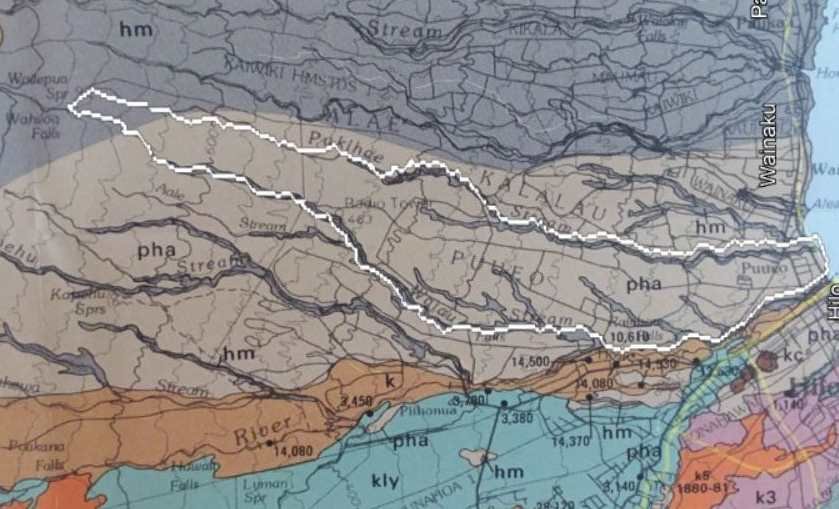
Geology
Volcanic deposits, lava and ash
Hawaii is a volcanic island. The land of Puueo was created from lava flows and ash deposits from Mauna Kea. Although dormant for about 100,000 years, Mauna Kea is still considered to be an active volcano, and will likely erupt sometime in the future. Puueo is a stack of lava and ash, with the top consisting of about 15 feet of ash The 15 foot ash layer is actually a stack of multiple deposits. The background of this page shows a cut through some of these deposits.
Ash deposits are unusual
For most of the island, the top layer is lava rock covered by a thin layer of dirt. This makes Puueo very unusual and it was a prize area for growing food. The geological map shows that most of Puueo is ash deposits. These deposits have very high water retention characteristics, but have been farmed to the point where there is little in the way of nutrients.
Gulches
This area gets between 100 and 200 inches of rain a year, and the ash deposits are easily eroded, leading to deep gulches even on minor streams.
Roads
Not only were culverts necessary, but rock had to be brought in to make the roads that we allowed access to this land.
Solar Panels?
No, we aren’t kidding! A substantial portion of the beautiful area may get covered with solar panels! This super rainy area will supposedly be producing solar power and pretend to be ag by having some goats trying to feed off the grass not covered by panels. This is an insult to the history of this area.
Where to get Maps
The usgs provides excellent geological maps: check out the 1997 geological map, and the 2007 map. Yet another map shows the quality of the soil in Hawaii in detail.

Puueo on a Geological Map
Almost all of Puueo has 15 feet of volcanic ash at its surface. This is very unusual on the Big Island and is one reason it was such a prized farming area